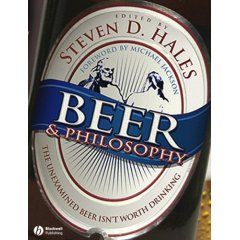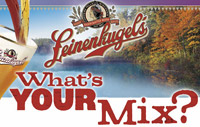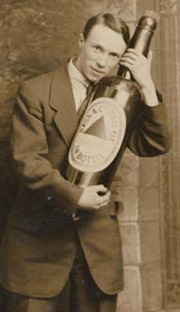Exhibit A: At the recent Great American Beer Festival, Pabst Brewing Co. won four medals and Large Brewing Company of the Year. Southampton Publick House on Long Island won a silver medal for its Double White Ale and a bronze for its Saison.
Which do we think it cooler?
Exhibit B: Wednesday Pabst Brewing announced (you may have to give them your age, then click on “News” to read the press release) that it has entered into a strategic alliance with Southampton Bottling to market and distribute its award-winning line of craft-brewed ales and lagers.
Remember Exhibit A.
 I’m sorry, but beyond that I’m not prepared to connect the dots. I do know that this does not mean that Pabst will be brewing a saison. Anywhere. Anytime. Pabst doesn’t own a brewery. It has Pabst, Lone Star, Pearl, Ranier, Blatz, Schlitz and a raft of others brewed under contract.
I’m sorry, but beyond that I’m not prepared to connect the dots. I do know that this does not mean that Pabst will be brewing a saison. Anywhere. Anytime. Pabst doesn’t own a brewery. It has Pabst, Lone Star, Pearl, Ranier, Blatz, Schlitz and a raft of others brewed under contract.
So a little more from the press release:
– The agreement is expected to take effect by year’s end with shipments to commence in the second quarter of 2008.
– “Success in the craft industry today requires three key components: High quality beers, a strong distribution network, and excellent marketing capabilities. This alliance combines all of these necessary elements. We are excited and energized by the prospect of working with a partner whose standards for quality and excellence are consistently recognized as world-class,” said Kevin Kotecki, CEO of Pabst Brewing Company.
– “The opportunity to distribute Southampton products to a wider base of consumers is something we have been interested in for quite some time,” Southampton President Don Sullivan noted. “Pabst Brewing’s extensive sales and distribution network and its ability to provide superior marketing support ensures that our brands will have the ingredients for continued success.”
– As part of the agreement, Southampton brewmaster Phil Markowski will continue to oversee production of their beers. He will work closely with Pabst Brewing’s Robert Newman. Markowski is author of Farmhouse Ales (pictured above), and one of the country’s most respected brewers.
Anyway, this it is doubly intriguing to pair this news with the rumor I heard at the Great American Beer Festival that Pabst plans to re-launch Schlitz using a throwback recipe.
 Would you trust a philosopher with your beer?
Would you trust a philosopher with your beer? The Chicago Tribune just ran a story on what the
The Chicago Tribune just ran a story on what the  Might one of the side effects of
Might one of the side effects of